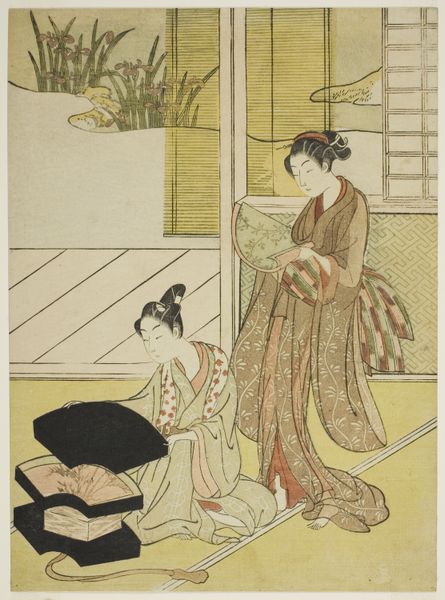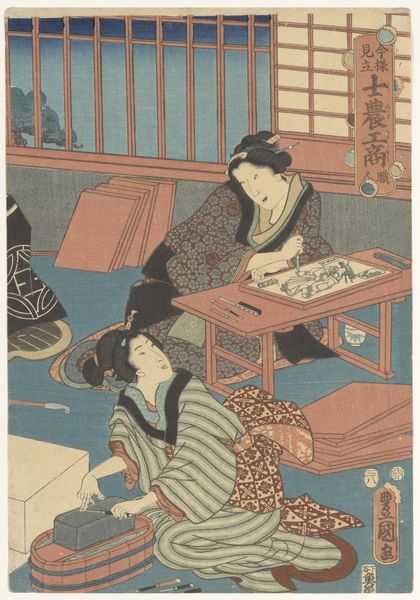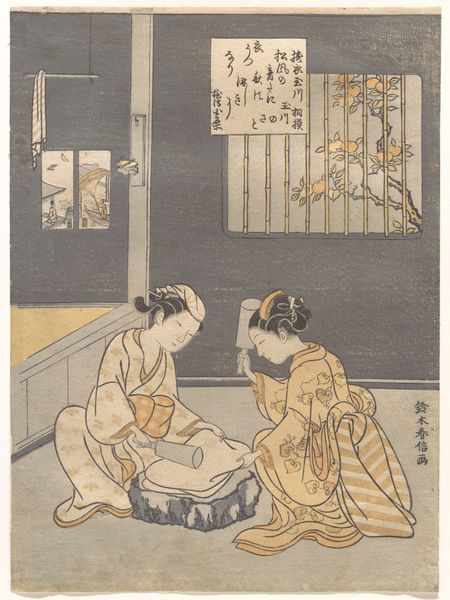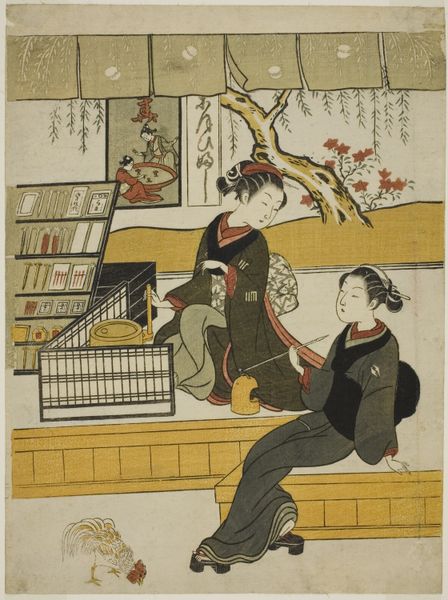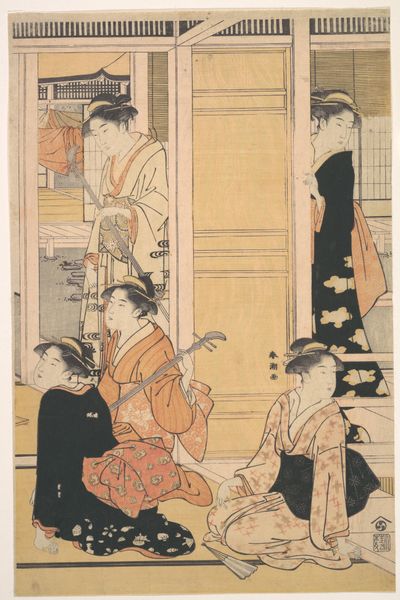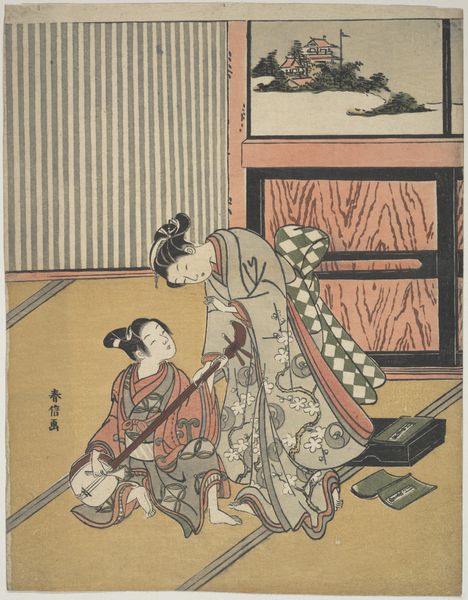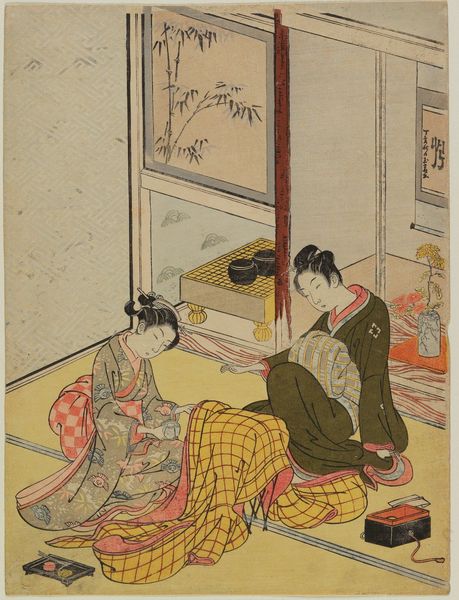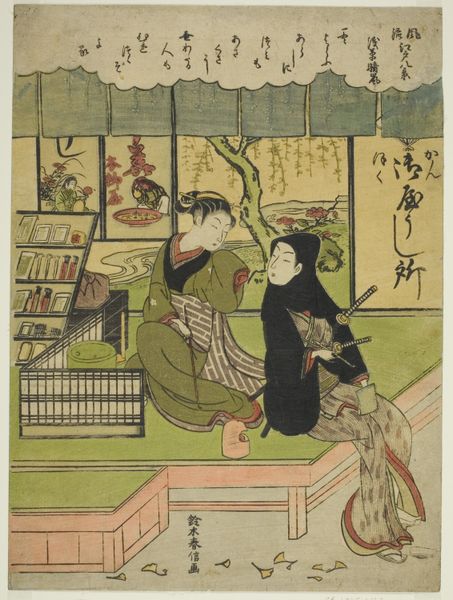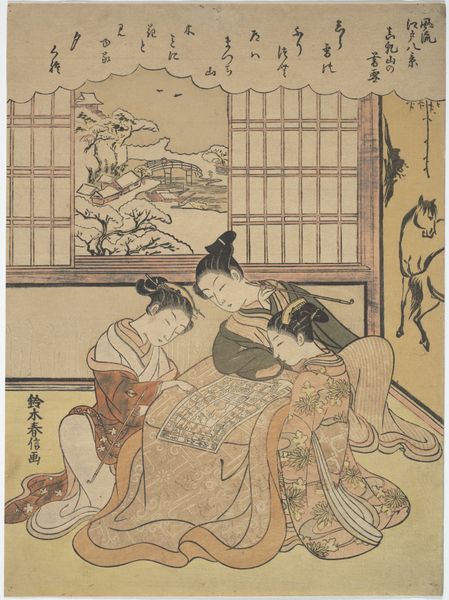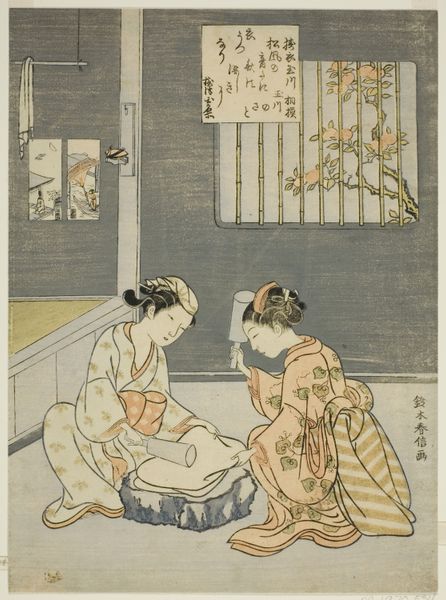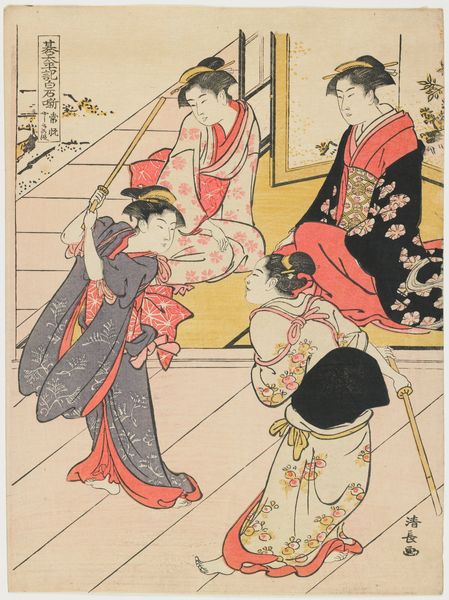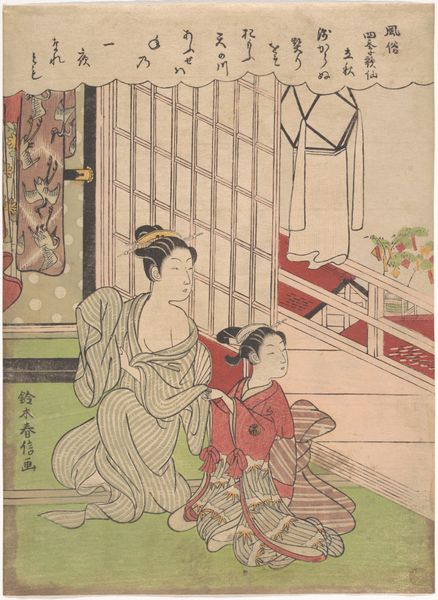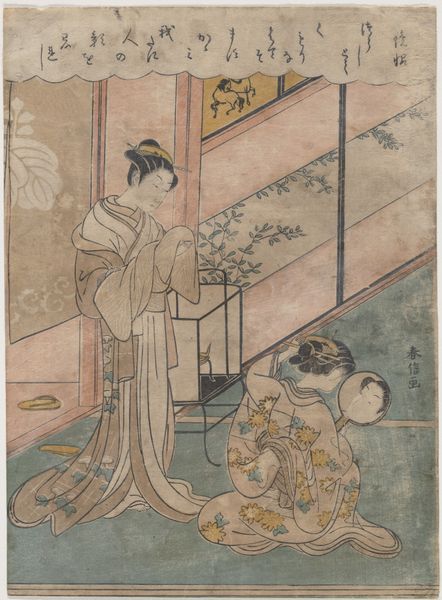
print, woodblock-print
#
portrait
# print
#
asian-art
#
ukiyo-e
#
figuration
#
woodblock-print
#
genre-painting
#
cartoon carciture
Dimensions: H. 10 3/4 in. (27.3 cm); W. 7 13/16 in. (19.8 cm)
Copyright: Public Domain
Curator: Suzuki Harunobu's "Asakusa Seiran", created sometime between 1725 and 1770, is a captivating woodblock print now residing at the Metropolitan Museum of Art. What’s your immediate impression? Editor: An unsettling quiet. Two figures indoors, but the subdued palette and obscured face create a feeling of stillness. What about the social conditions might explain that calm? Curator: Well, Ukiyo-e prints were essentially a popular art form, reaching a broad audience with snapshots of contemporary life. Here, we see not high society, but a domestic scene with a samurai-class woman, or perhaps a woman acting out a theatrical character, which complicates the reading, seated next to another woman. Editor: Right, the samurai is striking. That tucked-in sword, the shaved head covered by a cloth – such potent markers of status and profession. Is the contrast between the women intended to signify two aspects of culture in conflict? The artist might use symbols to tell a particular story that would connect with popular opinions. Curator: Perhaps not conflict so much as different spheres coexisting. Harunobu masterfully uses woodblock techniques – note the registration of the colors, each layer carefully applied – to create a detailed image. It was more labor-intensive than we might realize and a mass produced medium to allow this scene to travel across geographic regions to display current fashionable life styles. Editor: True. And the choice of imagery feeds into this as well. The willow tree we see beyond the figures as a symbol for the pleasure districts and sexuality in general could point to the scene being observed here. It brings so much narrative context into view! Curator: Consider too the act of consumption at play. The figures exist amidst various household objects. To view these goods from today can shed some light onto how one might spend one's wealth in earlier days. Editor: Looking closer at the symbols truly does weave a rich narrative fabric here. I'd want to dive deeper into Harunobu’s consistent use of this woman's symbolism across his wider artistic output. Curator: Indeed, seeing how it reflects social practices makes it all more complete. It really exemplifies how popular culture becomes enshrined as "art."
Comments
No comments
Be the first to comment and join the conversation on the ultimate creative platform.
